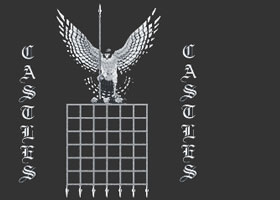Pontefract CastleThe De Lacys built it in the early part of the thirteenth century. Its area was seven acres. The wall of the castle court was high and flanked by seven towers; a deep moat was cut on the western side, where was the barbican and drawbridge. It had terrible dungeons, one a room twenty-five feet square, without any entrance save a trap-door in the floor of a turret. The castle passed, in 1310, by marriage to Thomas Earl of Lancaster, who took part in the strife between Edward II and his nobles, was captured, and in his own hall condemned to death. The castle is always associated with the murder of Richard II, but contemporary historians, Thomas of Walsingham and Gower the poet, assert that he starved himself to death; others contend that his starvation was not voluntary; while there are not wanting those who say that he escaped to Scotland, lived there many years, and died in peace in the castle of Stirling, an honoured guest of Robert III of Scotland, in 1419. It was besieged three times, taken and retaken, and saw amazing scenes of gallantry and bravery. It held out until after the death of the martyr king; it heard the proclamation of Charles II, but at length was compelled to surrender, and "the strongest inland garrison in the kingdom," as Oliver Cromwell termed it, was slighted and made a ruin. The Ghosts of Pontefract Castle
The wronged Richard has many companion ghosts - the Earl of Salisbury, Richard Duke of York, Anthony Wydeville, Earl Rivers and Grey his brother, and Sir Thomas Vaughan, whose feet trod the way to the block, that was worn hard by many victims. |

